Welcome back to the world of Pokémon! Erm, that was a long time coming, wasn’t it? I told you I’d get back to this feature at some point. Sure, it’s been nearly three years and I had to change the name of the series as a result of that slight delay, but never mind that because 3VG’s History of Pokémon is officially back in action!
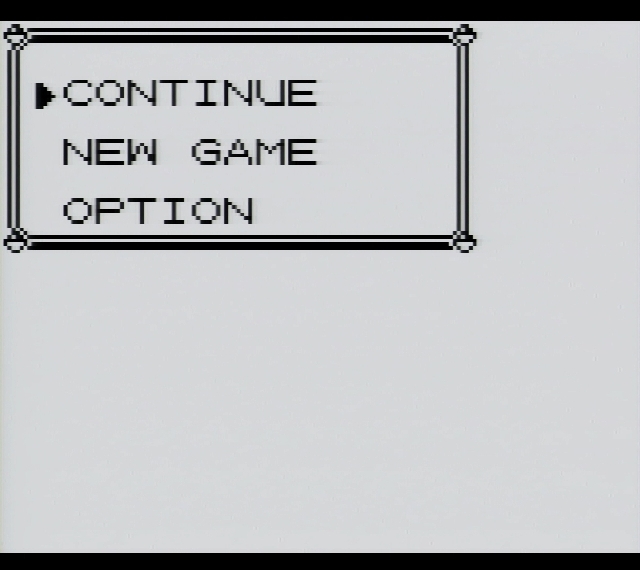
Last time, I wrote a long and barely coherent wall of text about the humble beginnings of Pokémon, briefly touching upon the original Japanese release of Pocket Monsters Red and Green in 1996 as well as the American and European launches in 1998 and ’99 respectively, and ending the article before actually talking about the games themselves. I also talked about the accent on the E in Pokémon and wondered why that’s there, but now that I think of it they probably just put it there to stop people from mispronouncing the name as “Poke-mon”… not that that helped much. In any case, today we’ll finally take a look at the first generation of Pokémon games, specifically the international Red, Blue, and Yellow versions. That is the Pokémon of my childhood. Well, kind of.



The truth is, I didn’t get to play Pokémon until after I’d turned 13 in the early summer of 2000, so I didn’t exactly grow up with it. By the time Pokémon Gold and Silver were released in April 2001, I was nearing the end of seventh grade and therefore officially too old for Pokémon. That, however, is a topic for another day. Right now, we are here to talk about Pokémon Red, Blue, and Yellow.
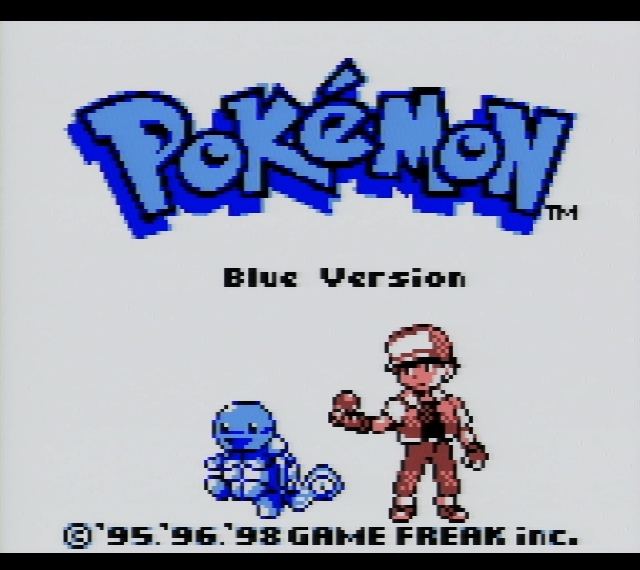
Just a quick note before we begin: most of the screenshots in this article are my own captures. The black bars at the top and bottom of the Pokémon Blue screenshots are there because I’m using FirebrandX’s 7x Game Boy Player/Game Boy Interface profile on the Framemeister, and these Pixel Purist profiles always leave small black bars around the screen in order to have perfectly square pixels (the Game Boy’s vertical resolution of 144px times 7 is 1,008, so that leaves 72 blank lines of pixels at 1080p). Not that they actually are square after resizing the images for this article, but still! Other screenshots were grabbed from various sources, and are credited as appropriate.
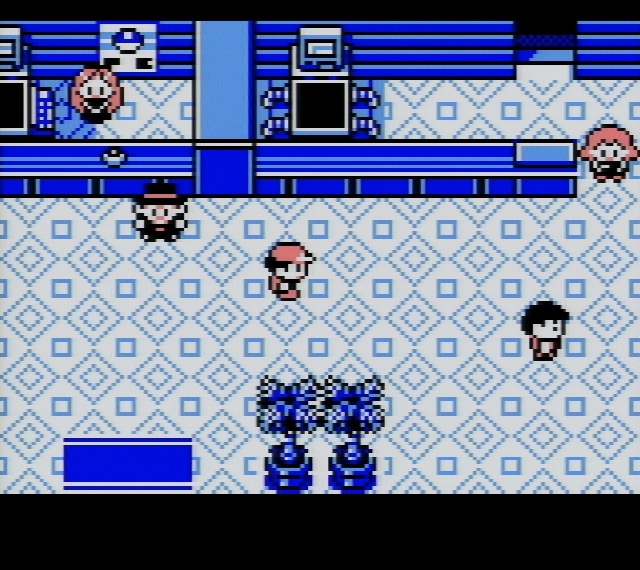
I highly doubt I need to tell you this, but just in case you’re a visitor from another universe where Pokémon never existed, the mainline Pokémon games are Japanese role-playing games where you catch and evolve monsters and send them to battle other monsters (both wild and NPC-trained ones, the latter being stronger and worth more EXP) in turn-based JRPG combat that runs on a sort of rock-paper-scissors style typing system. Fire beats grass, grass beats water, water beats fire, and so on. There is a total of fifteen types (or elements, as they’re occasionally called) in Generation I, with three more being added in later generations.
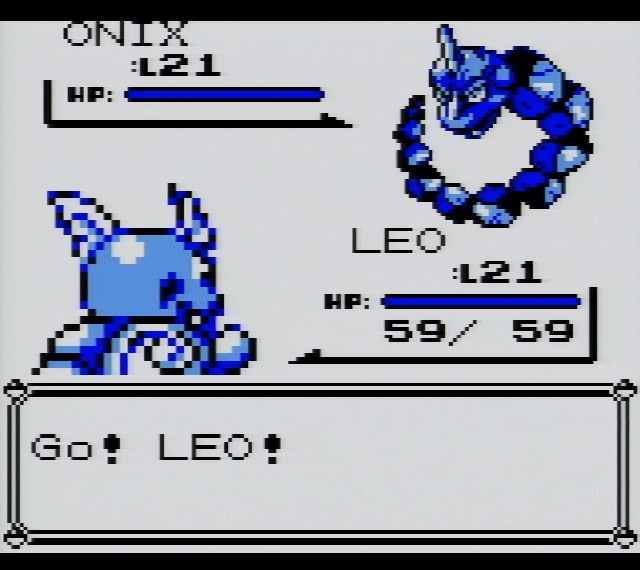
When a Pokémon uses a move with a type advantage (say, a Fire move against a pure Grass type), the move does double damage, and if the move has a type disadvantage (e.g. Grass against Fire) it’ll only do half damage or, in some cases (Electric against Ground being the most famous example thanks to the animated series), no damage at all.
If the target Pokémon happens to be a dual-type and both its types are weak to the attack type (e.g. a Bug/Grass Pokémon being hit by a Fire attack), the attack does quadruple damage to them and often instantly melts their health bar in an immensely satisfying manner. Seriously, as crude as the Game Boy presentation is, your opponent’s health bar just disappearing in a blink of an eye is absolutely wonderful to this day. If you score a critical hit, you do even more damage (1.5x to 1.95x depending on the level, and it apparently also stacks with STAB and type advantage bonuses!
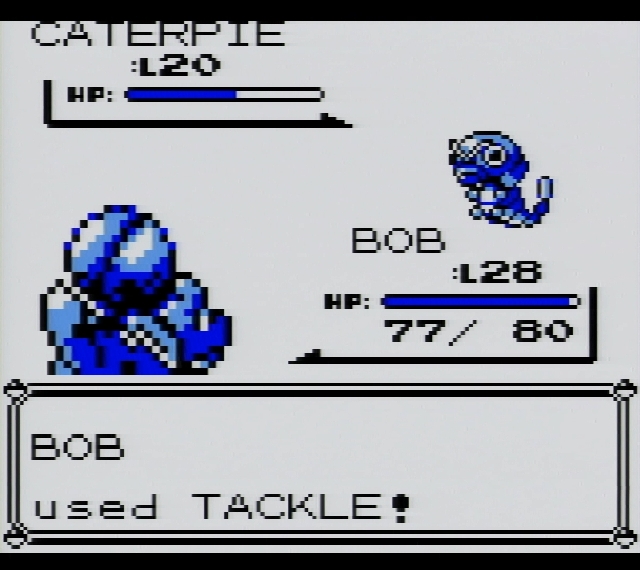
What the hell does stabbing have to do with Pokémon, you ask? Well, basically, Pokémon can gain a Same Type Attack Bonus of 50% extra damage when they’re the same type as the move they’re performing, e.g. a Fire type doing a Fire attack. STAB is one of those game mechanics I had no idea existed back in the day, and I don’t think the game ever actually bothers to explain it. Certainly not in Gen I, unless it’s on one of those Trainer Tips signs nobody ever reads.
I don’t have my original manual anymore (or my original Red cart for that matter, I sold that years ago and eventually bought a Blue cart to replace it) so I can’t check that, but at the very least the 3DS Virtual Console manual for Pokémon Yellow doesn’t say a damn thing about any same type attack bonuses.

In order to catch a Pokémon, you normally have to use one of your existing monsters to weaken it. You may get lucky with the RNG dice roll and catch a critter by simply throwing your Poké Ball or one of the stronger Balls at it, but most of the time you’re going to have to do things the old-fashioned way and that means hitting the Pokémon with attacks (just be careful not to accidentally KO them) or status effects, preferably both when you get to the unique legendary Pokémon late in the game.
Pokémon can be taught new moves with items known as TMs and HMs, short for Technical Machines and Hidden Machines respectively. This is quite useful, because a lot of Pokémon in the first generation of games have absolutely dreadful move pools from leveling up and basically require TMs to be any good in battle. That particular issue is exacerbated by the fact TMs are single-use items, meaning that you really have to commit if you’re planning to teach that Hyper Beam or Blizzard to a Pokémon. There are various shenanigans you can pull off to duplicate items, but that obviously wasn’t Game Freak’s intent.
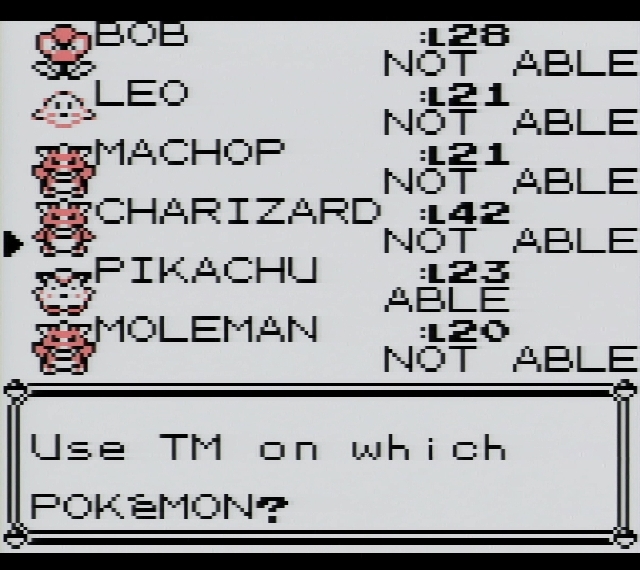
HMs are utility skills that can be used to open up new paths in the game. Cut is used to chop down small trees that block your way, Surf lets you traverse water routes, Fly allows you to, erm, fly to any major location you’ve visited, Flash lights up one dark cave in the game, and Strength lets you push boulders. Fly, Surf, and Strength can do decent damage in battle, but Cut isn’t great and Flash is useless. This is a bit of an issue because once a Pokémon learns an HM move, it can’t forget it and one of its four precious move slots will forever be taken up by a move that is worthless in battle and, in the case of Flash, nearly worthless in general since it’s only used in one location.
Most regular Pokémon are found via random encounters in areas with tall grass, in water when fishing or surfing, or in caves. The encounter rate is annoyingly high at times, but you can thankfully use Repel items to ward off that horde of Zubats that descends upon you whenever you enter a cave.
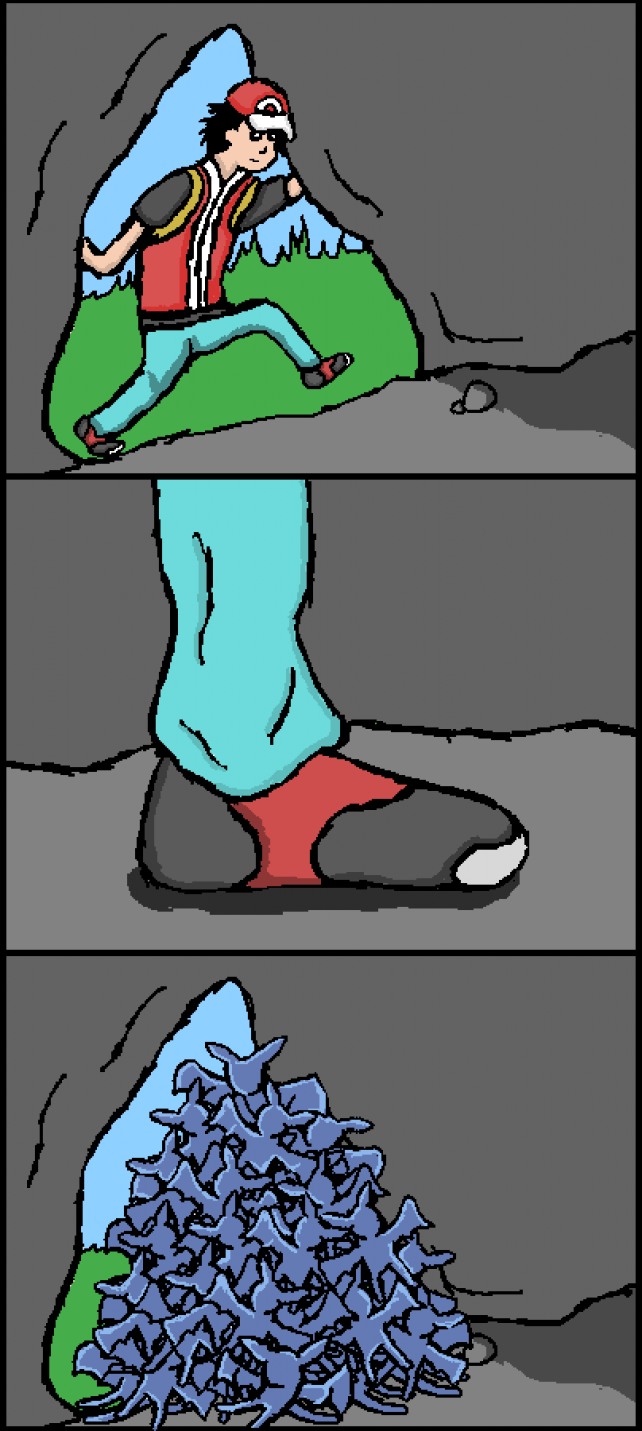
Catching all the Pokémon requires trading with other players or owning multiple Game Boys and cartridges, because each version of the game only has 139 (137 in Yellow, unless my admittedly limited math is failing me) of the normal 150 Pokémon available in the first place. The 151st, Mew, is a special case and only available through cheat devices, exploiting in-game glitches, or attending official Nintendo events back in the 90s and early 00s. There were many, many schoolyard rumors about Mew in those days and of course none of them were true, although I will say that the actual glitch methods of catching the little bastard are every bit as convoluted and ridiculous as those rumors of yore.

There are also several moments in the game where you need to choose a certain Pokémon over another (or two others with the starting Pokémon in Red/Blue) and the one you didn’t pick will be unavailable for that playthrough, and a few critters only evolve into their final forms when traded, so the actual number of Pokémon you can get on a single playthrough without trading is even lower than the 139/137 I mentioned.
Apparently, you do keep a traded Pokémon’s Pokédex entry and it shows up as “caught” even if you trade the actual Pokémon back, which would’ve been useful to know about two decades ago. Not that I ever really had anyone to trade with back then, as everyone else was just collecting the trading cards and emulating the actual games on PC.
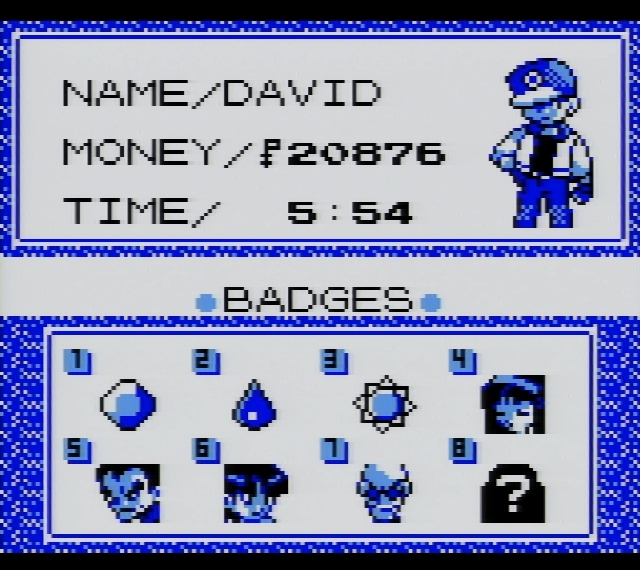
Aside from catching ’em all, the ultimate goal of the game is to become the Pokémon League Champion. First, you must defeat eight Gym Leaders in Pokémon battles and earn their respective Badges to gain access to the Pokémon League, and then it is time for an intense boss rush against a group of top Trainers known as the Elite Four.
When you beat the Elite Four, you’re the Champion! Well, not quite, because the irritating kid next door who has been acting as your rival throughout the game managed to beat the E4 just before you did. So, you must defeat him as well before being crowned the Champion of the Pokémon League and entering the Hall of Fame alongside the team of six Pokémon you used in the final battles.
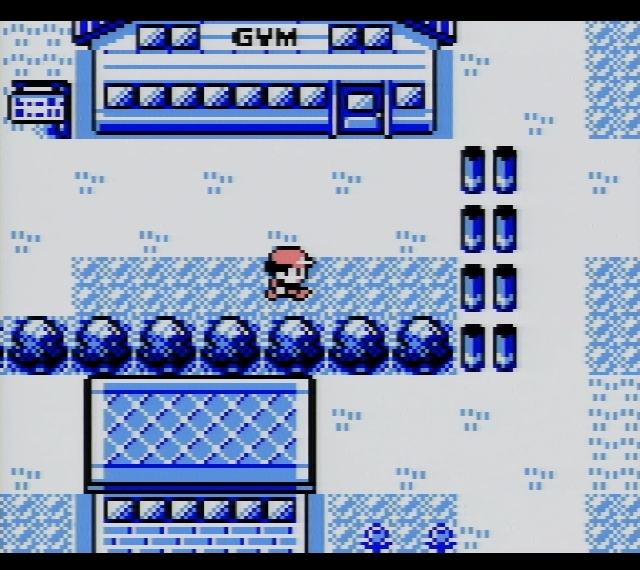
You know, explaining the basics of Pokémon like that feels incredibly weird because by this point it feels like this is the sort of thing literally everybody knows and doesn’t need to be explained, but I like to be thorough just in case. Hopefully that wasn’t too boring, but it’s not as if I need to go over this again in later articles because Pokémon games largely follow the same formula where you’re a kid who explores the [blank] Region, catches a bunch of critters and fights the evil Team [blank] on his (or her, once they introduce female playable characters in Pokémon Crystal) way to become the League Champion.
In the case of Generation I, you’re exploring the Kanto Region (which I believe wasn’t actually named in-game until Gen II), try to fill in your Pokédex of 150 monsters (151 isn’t necessary for completion) and the villain team of the week is Team Rocket, basically the Pokémon Mafia. Of course you take them down, but the truth is you could ignore them almost entirely if you didn’t need the Poké Flute from an NPC they kidnapped in Lavender Town and if one of their grunts wasn’t blocking the door to the Saffron City Gym.
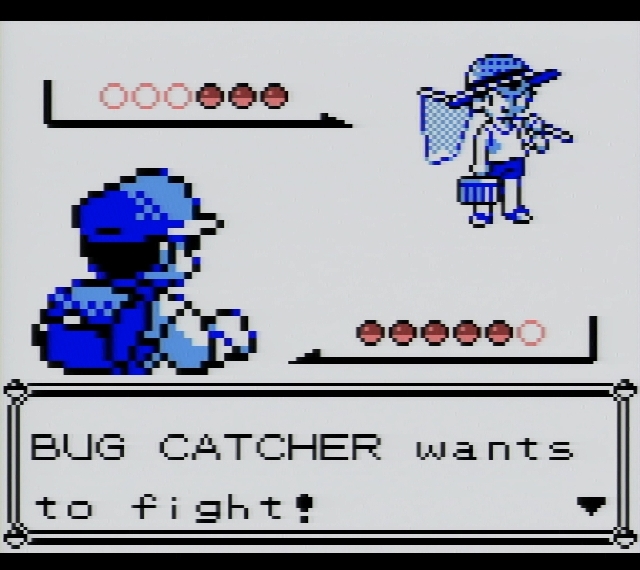
Anyway, as I mentioned last time, the international Red and Blue versions use the Pokémon distribution from the original Japanese Red and Green releases while retaining the bug fixes and other improvements from the updated Japanese Pocket Monsters Blue release. The script was also based on the Japanese Blue version, which caused a few discrepancies. For instance, “The RAICHU you traded to me went and evolved!” was another source of many a playground rumor because Raichu isn’t supposed to evolve any further, but that was simply an oversight because the NPC was talking about Kadabra (which does evolve into Alakazam when traded) in Japanese Blue.

Despite the improvements made by Game Freak for Japanese Blue and the international versions, the first generation of Pokémon is actually kind of a broken mess when you get down to it and has not aged very well at all. Now, that doesn’t mean the game isn’t fun or that it’s not worth your nostalgia, because it is still a lot of fun despite the flaws. If the games weren’t good, Pokémon wouldn’t have become the global phenomenon it did and certainly wouldn’t have had the longevity it has. Yes, all the money spent in marketing obviously helped, but marketing will only take you so far if the product itself doesn’t live up to it, especially in the long run.
Still, although Game Freak succeeded in creating a fun and addictive JRPG, they didn’t really know how to balance the first game at all. As such, we ended up with fun stuff such as some Pokémon types being completely useless and others (Psychic) being comically overpowered. Many of the balancing issues mainly affect competitive battling so they’re not necessarily obvious to the average player, but you can find some real howlers if you look them up.
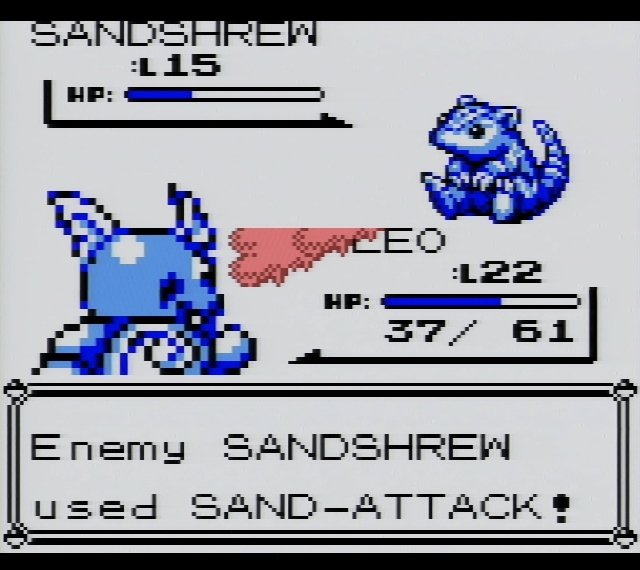
The battle mechanics aside, Gen I overall feels rather rough around the edges. Kanto is not a particularly interesting setting, and some of the routes are massive slogs due to the abysmally slow movement speed. You eventually get a bicycle to ride on, but it’s a bit fiddly to use. The sheer number of NPC Trainers can also wear you down rather quickly, because they’re thrown at you constantly in order to keep your team’s levels high enough so you don’t get absolutely clobbered by the next Gym Leader.

While the game is largely linear, there is a point in the middle where you can choose which Gym to tackle next, and the levels of those Gym Leaders’ teams are completely inflated even if you fight every Trainer and wild Pokémon you encounter. Despite their levels being much higher than yours, you should still get through the fights just fine with type advantages and whatnot, but it’s odd nevertheless.
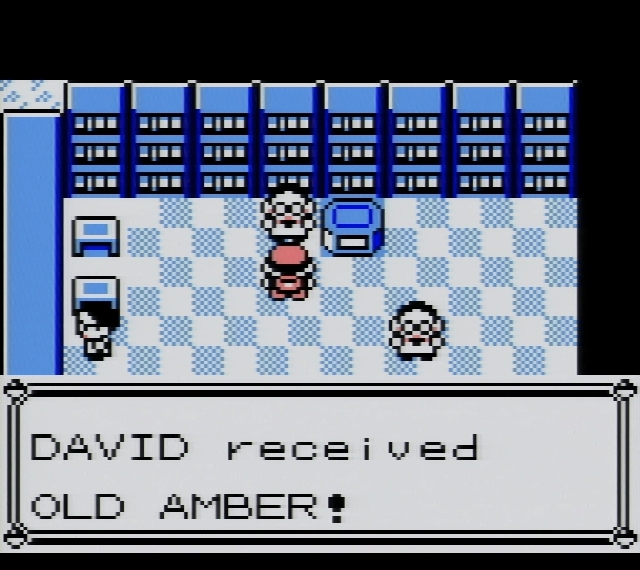
Leveling up your team can also be a pain, as Pokémon on your team gain no EXP if they’re not actively participating in battles. You can of course rotate them out or do that trick where you start the fight with one Pokémon and immediately switch it out for another so they share the EXP, but that’s kind of fiddly and not ideal. You can also obtain an EXP ALL item which gives half of the total EXP from each fight to the active participants and shares the rest between the others. So, your inactive Pokémon get some EXP, but active ones get half of what they normally would. It’s a tradeoff either way.
I’ve seen a lot of fans on forums complain about the EXP Share implementation in the current games and how it makes them too easy by giving the active Pokémon full EXP and the others receiving half EXP from each fight, which quickly causes the player’s team to become overleveled for Gyms if they’re battling every trainer they see. This is not ideal, although I will admit I do still prefer my entire team getting a decent chunk of EXP to having to grind to get everyone up to speed. At the very least, there should always be an option to turn it on or off.

On top of the balance issues and some questionable design, this game’s code is basically held together by duct tape and wishes. The sheer number of glitches, bugs, and oversights in Generation I is utterly staggering, and you don’t need to look very hard to find a glitch that could potentially wreck your game. Not just the save file, the actual game. Pokémon Gen I glitches don’t mess around. The game code has no failsafes programmed in and the Game Boy hardware has no memory protection to stop things from going wrong, so when things do go wrong… well, they can do so in a spectacular manner as the game attempts to roll with it.
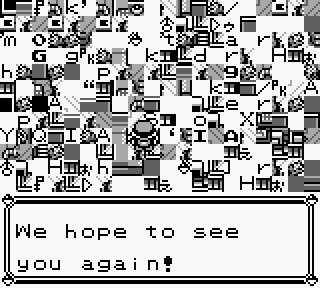
That being said, some glitches could be used to your advantage. I already mentioned the Mew glitch, but that didn’t really become widespread knowledge until years after Gen I’s popularity. No, back in Red and Blue‘s heyday there was another major glitch everyone knew about, one that was spoken of in hushed tones because frankly it was kind of creepy despite being largely beneficial. If you know anything at all about Pokémon Gen I, you know where this is going.
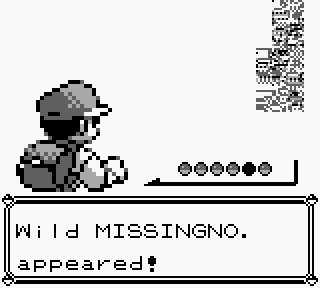
Yeah, there it is. Good old MissingNo. Not “Missingo” or “Missing? No!”, MissingNo. as in “missing number”, as in the invalid index numbers between the valid Pokémon index numbers. You can check out the Bulbapedia link above to get the full details on this glitch and many others, but essentially the game is interpreting garbage data as a wild Pokémon and you get this monstrosity as a result. Unlike its more malicious glitch brother ‘M that should be avoided at all costs, MissingNo. is not particularly harmful to your game as all it really messes up is the Hall of Fame screen, and the fact it gives you 128 of the item in your sixth inventory slot kind of makes up for that. Since the glitch is easy to repeat, you can easily give yourself infinite TMs, Rare Candies or Master Balls if you’re so inclined.
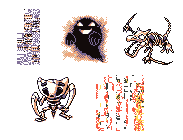
I never even tried to encounter MissingNo. in my game back in the day, because at the time no one really knew how it worked and I was scared I’d break something. And, well, just kinda scared in general because it seemed like the kind of creepy thing that should not exist, especially in a wholesome kids’ game like this. I admit I was a massive wuss as a kid, and back then I didn’t even know MissingNo. could appear as one of the Pokémon fossil sprites from the Pewter City museum or as the ghost from Lavender Town.
This whole thing with MissingNo. is something that would never happen in a modern game from a major publisher, but I feel it added a lot of charm and mystique to Pokémon back then. If something like THIS can happen in the game, what other crazy things could you possibly find? Some, but not all glitches were fixed in Pokémon Yellow, the final release of Generation I.
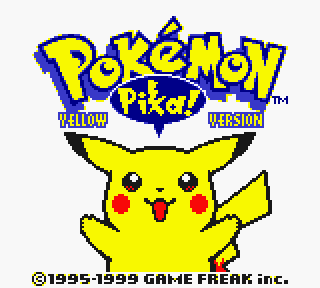
While largely the same game as Red and Blue, Yellow ties in a bit more closely with the animated series that was hugely popular at the time. Well, in this case that mostly means some of the Pokémon sprites from Red & Blue have been replaced with their anime depictions, some NPCs have had their sprites adjusted to resemble their anime counterparts or been retooled as characters from the show (including the duo of Jessie and James replacing generic Team Rocket grunts in certain parts of the game), and of course you have Pikachu following you around at all times like Ash’s Pikachu does on the show (unless you put him in the PC box or trade him, you absolute degenerate).
You’re also not allowed to evolve Pikachu into Raichu with a Thunder Stone here, and in fact Raichu can’t even be found in Yellow outside the Gym battle with Lt. Surge, so you have to trade one from the other versions. Poor old Raichu just didn’t get any love whatsoever until Gen VII.

You don’t get to choose your starter Pokémon in Yellow because you just get Pikachu like in the show, but that’s fine because you can actually get Bulbasaur, Squirtle, and Charmander from NPCs early on in the game. Just like in the show, and also a lot less annoying than having to mess around with trading or grind Pokémon Stadium’s Gym Leader Castle to get the starters! There’s also a surfing Pikachu minigame that can be accessed if your Pikachu knows the Surf move, which it normally doesn’t but can learn in Pokémon Stadium.
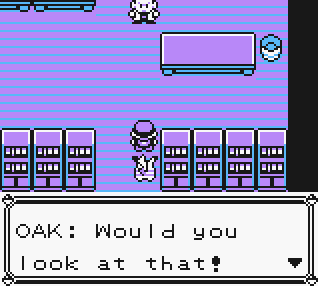
One of the nicer features of Yellow is the fact it actually takes a lot more advantage of the Game Boy Color than the previous releases, by using the Super Game Boy palettes that were only available for Red and Blue with… well, the Super Game Boy, as well as the Game Boy Tower in Pokémon Stadium, which allowed you to play the Game Boy carts on your N64 using the Transfer Pak accessory. The emulation wasn’t perfect and the N64’s limited video options didn’t help, but it was amazing at the time and that was how I played most of my first Red playthrough, not having a Game Boy until a few months later.
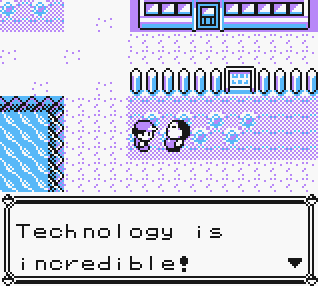
While not nearly as colorful as proper Game Boy Color titles, the SGB palettes allow for Pokémon to appear in their correct colors and for different areas of the game to have different background colors. Viridian City is green, Cerulean City is blue, and so on. It’s not perfect, but it does add a nice bit of variety to the graphics. The default in Red and Blue on the Game Boy Color was a red or blue tint respectively, with the item and character sprites being green or red.
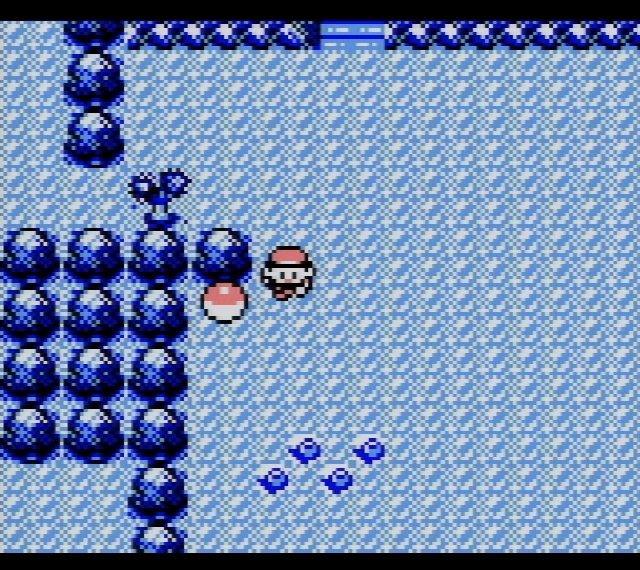
Well then, what’s the best way to play Pokémon Generation I today if you want to relive your childhood nostalgia or maybe were too young to play the originals when they came out and want to see where it all began? First off, I’d recommend the Yellow version because it’s the most polished release of the trio (not that that’s a high bar to clear) and also looks the nicest. Red and Blue are better for messing around with glitches if that’s your thing, although the Mew Glitch does at least work on all versions.
The Game Boy cartridges are out there and shouldn’t be obscenely expensive, so those are an option if you really want to go old-school with original hardware. You can also connect to Pokémon Stadium if you have that game and the N64 Transfer Pak. Just remember that the save batteries on those original Game Boy carts are either dead by now or on their last legs, so if you decide to pick up an original cartridge you should either get one with a fresh battery or replace the battery yourself if you have any sort of soldering skill.
However, there are more convenient options. In early 2016, Pokémon Red, Blue, and Yellow were released for the Nintendo 3DS Virtual Console service. As far as official methods to play the game are concerned, this is by far the most convenient and accessible and even supports Wi-Fi trading (since you obviously can’t connect a Game Boy link cable to a 3DS) and the Pokémon Bank service. Yes, you can import your Pokémon from Gen I to Gen VII if you’re so inclined.
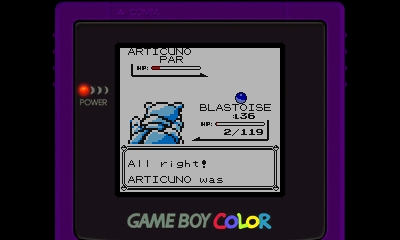
While an extremely solid option for most players, the Virtual Console version isn’t quite perfect. The image is noticeably darker than it would appear on a backlit Game Boy Advance, presumably to prevent seizures from flashing images (which are also considerably toned down from the original versions). If you play using the default screen fit mode on the 3DS, the picture is also heavily blurred due to what appears to be the same low-quality bilinear scaling that ruined NES Virtual Console games on the Wii U.
At least here if you choose to play in the original resolution with the Game Boy border, the image is nice and sharp despite being a bit dark. To be fair, it is still brighter and easier to see than an actual Game Boy/Game Boy Color screen or a frontlit Game Boy Advance SP screen, let alone an original non-backlit GBA, and when you look at my Game Boy Player screenshots, the brightness levels are pretty close to the 3DS. So, it’s not too bad overall. Also, because Nintendo doesn’t want you to cheat in these 20-year-old games, or maybe to make sure the online trading doesn’t break horribly from a technical standpoint, save states are disabled.

Now, obviously, you could also do what all of my school friends (including those two gits who promised to buy their own copies of Pokémon Stadium and different versions of the game so we could all trade and catch ’em all but ended up backing out of the deal without telling me like the UTTER HUMAN GARBAGE THEY WERE AND PROBABLY CONTINUE TO BE TO THIS DAY… then again they’re probably living fulfilling lives and raising families instead of writing 5,000-word articles about children’s games in the middle of the night) did back in the day and just emulate the game using unofficial methods. That might just be the way to go with Gen I at this point, unless you want to use the 3DS online features.
Of course, the original Gen I games aren’t your only options if you want to explore Kanto. The area is accessible in the post-game of Pokémon Gold, Silver, and Crystal, albeit in somewhat cut-down form, and also shows up in the HeartGold and SoulSilver remakes. Speaking of remakes, Red and Blue (or rather Red and Green) themselves were remade for the Game Boy Advance in 2004 as Pokémon FireRed and LeafGreen, using the Gen III engine and gameplay mechanics from Pokémon Ruby and Sapphire and featuring a smattering of new extra content such as various Gen II Pokémon.

FRLG, as it’s commonly called by fans, is a solid version of the game, but good luck finding a legitimate copy online. eBay and Amazon are full of pirate GBA cartridges, especially Pokémon ones, and even though legit carts aren’t massively expensive you’ll have to be extremely careful and know how to spot the fakes. Some of the fake cartridges are clearly suspect but others are almost indistinguishable from legitimate ones, only for save errors and other issues to rear their ugly head once you start playing. If you open up the cart, it’ll probably look pretty shoddy inside, so try to make sure the seller has a picture of the actual board before you commit to any purchases. Caution is very much advised when shopping for GBA games, not just online but at retro gaming stores as well.
There are many guides online to instruct you on how to recognize fake GBA carts and I highly recommend checking those out, although some of those also have false information even when they’re uploaded by seemingly reputable sources. Let me be very clear on this: a round Original Nintendo Seal of Quality or a “CE” on the label are NOT signs, let alone obvious signs of a pirate cart by themselves and should absolutely NOT be treated as such! If you see a cart that has those two things but nothing else that looks suspicious, it’s probably a 100% legitimate European cart and runs fine on any GBA or DS/DS Lite from any region!
In November 2018, another Gen I remake was released for the Nintendo Switch in the form of Pokémon Let’s Go Pikachu and Let’s Go Eevee. This is an interesting one. As the name suggests, the Let’s Go games feature Pokémon Go connectivity so you can transfer your critters from the mobile game to the Switch, and it also replaces the original wild Pokémon capture system with something that more closely resembles Pokémon Go while keeping the Trainer battle mechanics (Legendary Pokémon are fought in the traditional way as well) and overall structure from the mainline games. This is still very much recognizable as a Pokémon game.
The game has certainly been streamlined in many ways to attract younger audiences and casual/lapsed players who may be intimidated by the mechanics upon mechanics that have been piled onto the mainline games over the last two decades, but Let’s Go still has more to it than the Gen I games and is much more enjoyable to play, and I’d go as far as to say it’s my favorite way to experience Kanto. While I certainly hope and expect the next mainline Pokémon game to have more features than this one, I also hope some of the quality of life changes from Let’s Go make it into the main games, because going back to random encounters instead of having wild Pokémon show up on the overworld would just feel archaic at this point.
Right! I think that just about does it for the first generation of Pokémon and its remakes. I could’ve easily gone into much more detail, but I have to finish this up at some point. Next time, whenever that might be, we’ll check out Generation II! That’ll be interesting for me as well, because… well… I did say I was too old for Pokémon by the time Gold and Silver came out, didn’t I? I didn’t play any version of those games until a few years back when I played HeartGold, and never even touched the actual Gen II releases until this week!
And with that, it’s time to end this article, and the year 2018, by saying thank you to everyone who has been reading these posts, hopefully you’ve enjoyed my content this past year because I’ve certainly enjoyed creating it. Have yourselves a great new year, I’ll see you in 2019!
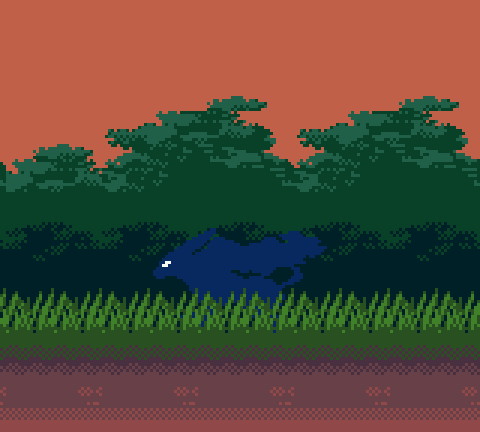

![Recording_2018-12-31_05-21-30_0001.ts_snapshot_12.42_[2018.12.31_05.56.35]](https://3rdvoicegaming.com/wp-content/uploads/2018/12/Recording_2018-12-31_05-21-30_0001.ts_snapshot_12.42_2018.12.31_05.56.35.jpg?w=740)
![Recording_2018-12-31_05-21-30_0001.ts_snapshot_21.22_[2018.12.31_05.56.58]](https://3rdvoicegaming.com/wp-content/uploads/2018/12/Recording_2018-12-31_05-21-30_0001.ts_snapshot_21.22_2018.12.31_05.56.58.jpg?w=740)
![Recording_2018-12-31_05-21-30_0001.ts_snapshot_00.50_[2018.12.31_05.55.36].jpg](https://3rdvoicegaming.com/wp-content/uploads/2018/12/Recording_2018-12-31_05-21-30_0001.ts_snapshot_00.50_2018.12.31_05.55.36.jpg?w=740)